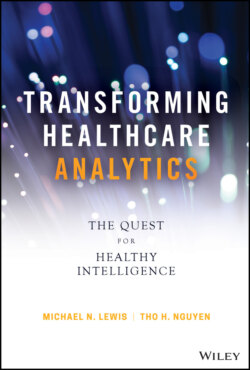Читать книгу Transforming Healthcare Analytics - Michael N. Lewis - Страница 23
UNSTRUCTURED DATA
ОглавлениеHealthcare data will not get simpler in the future and will only become more complex due to its variety and volume from unstructured data. Examples of unstructured data include email, social media data, XML data, videos, audio files, photos, images, sensor data, spreadsheets, web log data, mobile device data, RFID tags, and pdf documents. In the report referenced above from IDC, about 80% of the world's healthcare data is unstructured and needs to be treated differently than structured data that are normally in row-and-column format.
Approximately 1.2 billion unstructured clinical and medical documents are created every year. Critical medical information is often kept in these documents since it is so difficult to extract and analyze to obtain insights from them. One important way to improve healthcare, enhance patient care, and accelerate clinical research is by gathering, understanding, and analyzing the insights and relationships that are confined and contained in unstructured data. Such free-form medical text, hospital admission notes, and a patient's medical history are pertinent and relevant data points to help uncover opportunities.
As we embark on the digital transformation, healthcare organizations collect and leverage even more unstructured data from patient-generated tracking devices such as blood pressure sensors, heartbeat monitoring, and location identification. These mobile devices are constantly collecting your data that can be every minute or hour. Over days, months, and years, these data points can become massive in volume and they can be useful for clinicians to have more insight to prescribe to their patient a regimen toward preventive care.
